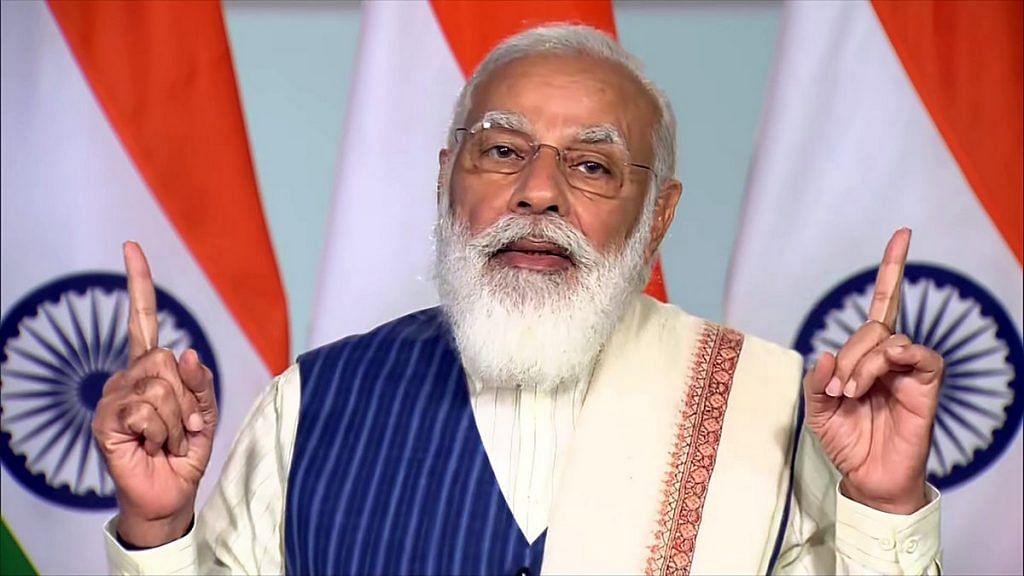Let’s assume that India is serious about growing its manufacturing sector to become 25 per cent of GDP. This target was first set by the Manmohan Singh government in 2012, with a lead time of a decade (hence a target year of 2022). That goal, of 25 per cent by 2022, was repeated by the Modi government when it launched its Make in India programme. There has been no progress so far, indeed the share of manufacturing has dipped somewhat since 2012. Under the new self-reliance programme, one could assume that the goal of 25 per cent share of GDP could be re-fixed for the year 2030 — i.e. with the same lead time of a decade. What would such numbers imply?
Assume optimistically that in 2021-22, GDP gets back to the Rs 204 lakh crore that it was in 2019-20, i.e. pre-Covid. Assume further that the economy grows at 6 per cent annually for the following eight years. The GDP would then become about Rs 325 lakh crore in constant rupees by 2029-30. If manufacturing is to grow from 14 per cent of Rs 204 lakh crore to 25 per cent of about Rs 325 lakh crore in 2029-30, it would have to almost treble from Rs 28 lakh crore to Rs 81 lakh crore, and raise its share of incremental GDP to 44 per cent. Annual manufacturing growth over 2022-30 would then have to be in excess of 14 per cent.
These numbers are way beyond anything that Indian manufacturing has achieved. Importantly, the import substitution push will not make a big difference. Even if some of the projected manufacturing growth is to come from substituting, say, 10 per cent of current merchandise imports ($45 billion annually, or Rs 3.4 lakh crore), and by obviating the future growth of such imports, the contribution of such import substitution to the total manufacturing sector would remain relatively small. Especially so since such domestic production will continue to have a significant import component, and therefore only partial domestic value addition.
Also read: Indian economy will struggle even after Covid, grow at 4.5% until 2025 – Oxford Economics
If overall GDP increase is assumed at 6 per cent within a scenario of rapid manufacturing growth, the services sector would have to slow sharply. Since manufacturing requires supporting services (trade, transport, financial services, etc.), a scenario where it grows at multiples of services sector growth is not realistic. Even if, alternatively, we were to assume that overall growth would be not 6 per cent but 8 per cent, and that manufacturing would account for no more than 20 per cent of rapidly growing GDP by 2029-30, the numbers for annual manufacturing growth would remain unrealistic.
This shows the limitations of attempting rapid growth through a manufacturing boost that focuses on the domestic market, especially with some of the thrust areas (like upstream investments for solar panels and telecom kits) being capital-intensive and therefore not contributing much to employment. As should be evident, atmanirbhar is more Nehruvian than the ruling dispensation might care to admit, whereas a real departure would be to focus on more labour-intensive sectors and export markets — thereby rejecting the export pessimism of Nehru’s time.
Can an economy of India’s size find enough export markets? There is only one way, in a world getting divided into trading blocs, and that is by joining one or more of the blocs. Which is why the decision to stay out of the Regional Comprehensive Economic Partnership (RCEP) has the potential to become, in the long term, one of the Modi government’s major blunders.
It is said that the RCEP would have further de-industrialised India, as it already has been (apparently) by a few free trade arrangements — an assertion that many contest. Nor is the problem only China, because India has a trade deficit with virtually every country in the Asia-Pacific. The problem is a broader one, of India’s competitiveness, which has to be improved so that opening up leads to more benefits than costs, to industrialisation and not its opposite. And the goal should be to avoid getting shut out of the region that will account for the bulk of the global growth in the foreseeable future. Given the RCEP’s time-table of two decades, India would have time to get ready. If India still prefers atmanirbhar, it is an admission of defeat.
By Special Arrangement with Business Standard.
Also read: IMF, G-20 warn recovery may be derailed, risks still very high
